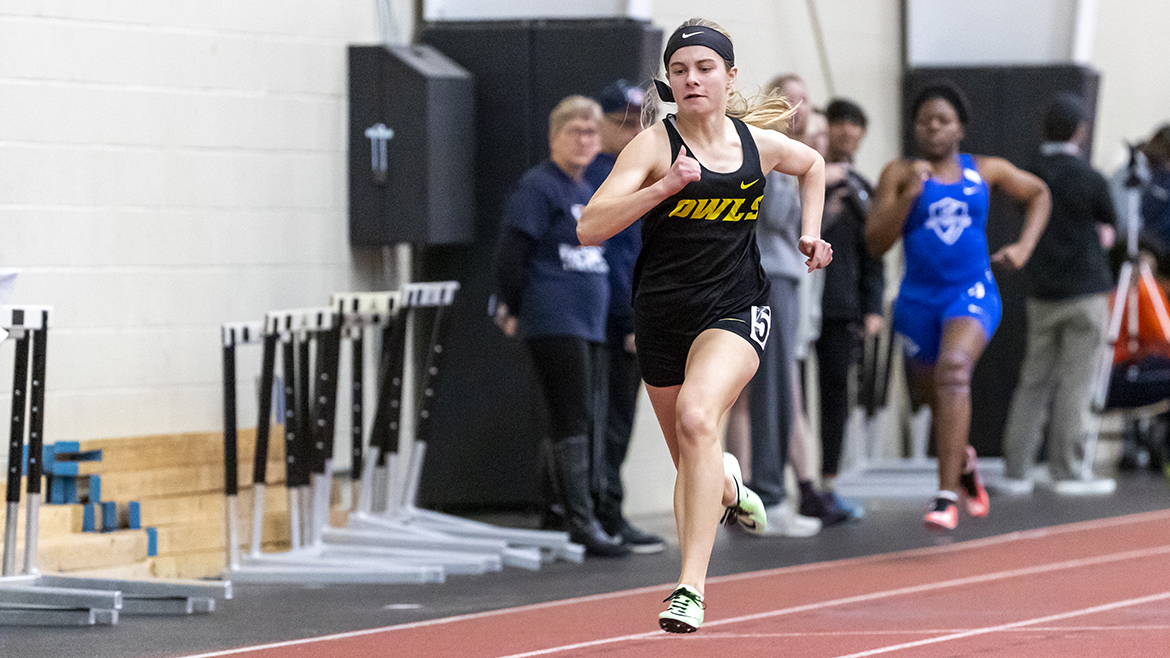By Holden Davitian, Staff Editor
Although most of Bryn Mawr College’s student-athletes focus their attention on a single sport, a number of athletes at Bryn Mawr play on multiple athletic teams throughout each academic year.
At first, the thought of participating in multiple sports in one year seems almost impossible; and yet, 26 out of 181 Bryn Mawr students are currently multi-sport athletes. Kathy Tierny, Bryn Mawr’s Director of Athletics, explains that the “phenomenon” of playing multiple sports at the collegiate level has decreased, but the college’s Athletic Department actively encourages interested students to pursue it. The department necessitates a week off between seasons to ensure that student-athletes have a sufficient break—physically and mentally—to “recharge and regroup.”
Tierney explains that Cross Country and Track, for example, actually consist of three different sports: Cross Country (XC) in the fall, Indoor Track (IT) in the winter, and Outdoor Track (OT) in the spring, making these students triple-sport athletes. She adds that this combination is by far the most popular, with 15 students participating in one sport each season. Although most members of the XC/Track team do participate in all three sports, there is “not a high percentage who stick with doing all three, all four years.” Nevertheless, the department believes that there are benefits in continuing to train from one season to another. The second-most popular combination for multi-sport athletes is playing both a fall and spring sport; the least common is playing three different sports back-to-back.
Student-athletes can be recruited for both or all three sports at once by separate coaches, or they can be recruited for a primary one and then walk onto other teams. Recruiting for XC/Track is done by one coach, so students frequently end up doing all three sports. Many fall athletes pick up track during the other seasons as it provides a way to stay in shape and, according to Tierney, “it’s a complimentary sport that can act as training for other sports.”
Meghan O’Shea is a first-year at Bryn Mawr who plays field hockey in the fall and lacrosse in the spring. In high school, she participated in recruiting events for both sports, but she “thought she would eventually have to choose” and explains that “being at Bryn Mawr has given me the unique opportunity to play both of the sports I love, since both of my coaches have encouraged me to play both [sports] since I’ve been recruited.” Tierney notes that playing both lacrosse and field hockey has historically been a popular combination, and the sports seem “to help each other out.” The fall-spring sports “offer a good amount of time off the field in the winter,” Tierney says.
Allana Mora-Mickens is another first-year who plays both volleyball and basketball, and who “wasn’t always planning to play two sports in college,” though she hoped “to at least play one at the collegiate level.” Fortunately, both teams at Bryn Mawr ended up seeking her out to play for them.
O’Shea believes that both the lacrosse and field hockey teams have similar dynamics, so the transition between the seasons was fairly seamless. What was hardest was time spent off the field. She also explains that she has to ensure she plans her schedule “accordingly in order to get all my work done around practice, because for over two-thirds of the year I have daily practices or games.”
For Mora-Mickens, her two teams actually have very distinct dynamics, with the volleyball season being much shorter than basketball’s. Moreover, with a larger number of basketball games, she says she felt like “I spent a lot more time with the basketball team because we were travelling together a lot.” Mora-Mickens continues to describe how the ratio of upperclassmen to underclassmen affects the philosophies of the teams. With volleyball, “we were all very young and only had one senior, so we focused on creating strong bonds to create foundation for the upcoming years.” By contrast, with volleyball, they had more seniors on the team, allowing the first-years to rely “heavily on their guidance on and off the court.”
Both O’Shea and Mora-Mickens believe that playing on multiple teams has given them a remarkable opportunity to create strong bonds with their peers. Mora-Mickens explains that the “family that my teams create makes the hard work worth it.” O’Shea echoed similar sentiments of having multiple families that she draws inspiration from.
Tierney believes that because of Bryn Mawr’s academic rigor, student-athletes are more “integrated and representative of all students in terms of their interests, extracurriculars, and their commitment to academics.”
Image credit: Bryn Mawr College (pictured: Kass Wojcik ’22)
